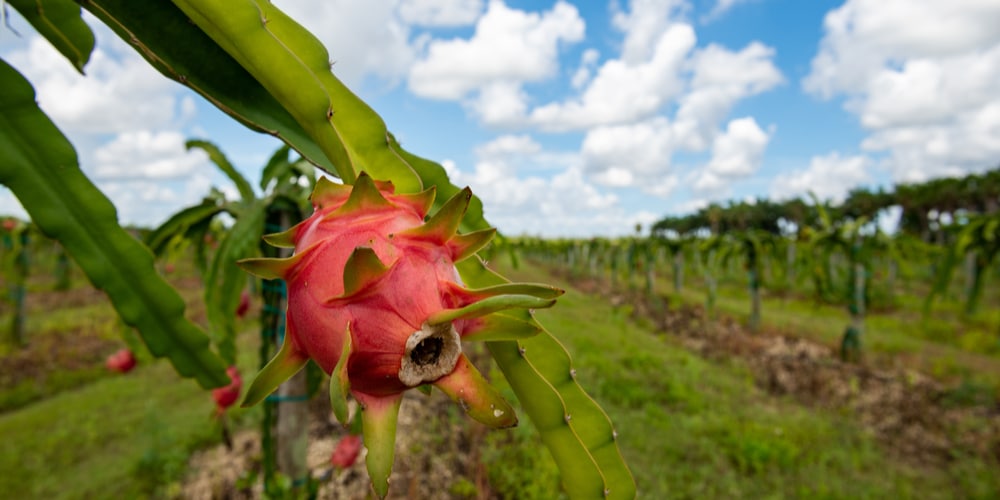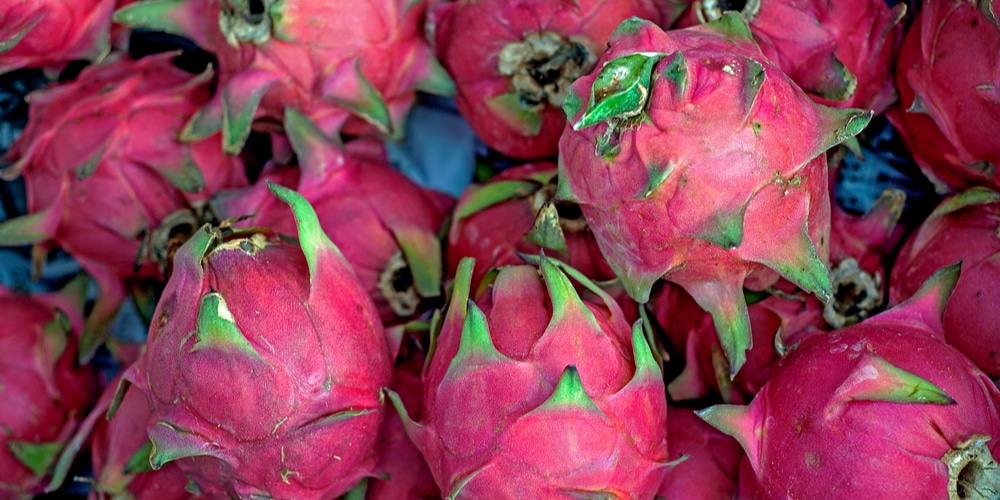You might know of the delicious Dragon Fruit, but despite what many people think, it is native to South America rather than South East Asia. The fruit is a cousin of the papaya and prickly pears and comes in several varieties, which may vary in skin and flesh color. But of the several species of Pitaya (the other name of the Dragon Fruit), is there one blue?
In essence, is blue dragon fruit a thing? Or is it something that you should not expect from this fruit? We have collected all the information you must know about the subject to clear all of your doubts.
Is Blue Dragon Fruit Real?
Let’s go straight to the truth. Dragon fruits’ flesh comes in several colors, such as pink, white, yellow, purple, and red. As a rule of thumb, you can expect plants with more thorns around the flowers to produce darker fruits. And usually, the darker the flesh color, the more antioxidants.
Some people might mistake deep blue dragon fruit for blue species. Some varieties that produce such fruits include American Beauty, Cosmic Charlie, Tomsead, Purple Haze, and Physical Graffiti.
However, don’t expect a deep blue color. The truth is that such fruits do not exist in nature. There might be a slight tint of blue, but in essence, the flesh will mostly be white, yellow magenta, or purple. And the combination might look blue.
How Do You Determine If Your Dragon Fruit is Ready?
Despite looking challenging to open, dragon fruit is easy to cut and eat fruit that can add a delicious taste to your smoothies or provide you with plenty of nutrients as it is. Commonly dragon fruits are pink inside and have white flesh with black seeds. But how can you tell when a dragon fruit is ready to eat?
The fruit must look shiny and have no blemishes or wrinkles. Also, it should be soft before you cut it: like avocados, you must avoid opening rock-hard fruits, or they will never mature. The same applies to overripe dragon fruits, which feel mushy and don’t have such a delicious taste. Also, the skin shouldn’t be green or light. It must have an even color.
To cut open a dragon fruit, slice it in half and use a spoon to scoop out the flesh. Then, cut it into cubes (or how you prefer it). But don’t expect an explosion of flavors! Dragon fruits taste something like a mild kiwi and a pear. If you like sweet fruits, you’ll love eating red dragon fruits!
Growing A Dragon Fruit Plant
While dragon fruit might be challenging to find at the store, it isn’t a too tricky plant to grow. This hardy cactus is native to Mexico and South America, and you can plant it as an ornamental. Dragon fruits can be grown in Florida or other states with a warm climate.
As with most succulents, once they find a place to thrive, they will give you plenty of satisfaction. Their blooms are unique and only open at night. Also, they release an attractive scent that will bring you memories of the tropics.
Unlike most cactus varieties, the dragon fruit plant is a climber. So, you’ll need to provide it with some support to allow it to grow. Besides, your plant will thrive in most soil conditions but perform much better in sandy and slightly acidic ones.
Pay attention to your watering schedule to prevent issues: only water your plant when the soil feels dry. Avoid growing a dragon fruit plant if you live in a cold region: the ideal temperatures are between 65 and 80°F.

